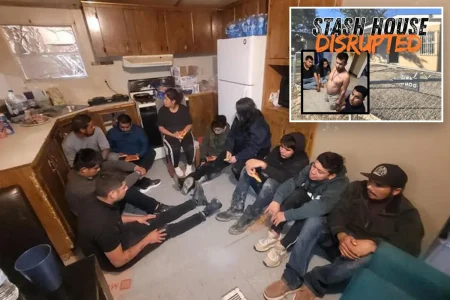Weaponized Drones: The Unseen Terror Stalking Kherson’s Civilians
A New Face of Urban Warfare Emerges in Southern Ukraine
The morning air in Kherson carries more than just the scent of the nearby Dnieper River these days. For residents of this embattled southern Ukrainian city, the subtle buzz of small aerial drones has become an ominous sound—one that can signal imminent danger or even death. According to a comprehensive report released this week by a United Nations commission investigating human rights violations in Ukraine, Kherson’s civilians now face a terrifying new reality: small unmanned aerial vehicles systematically targeting ordinary people, dropping modified hand grenades on unsuspecting victims below, while operators record video documentation of these attacks.
“What we’re witnessing in Kherson represents a disturbing evolution in urban warfare tactics,” explained Alexandra Kowalski, a senior analyst at the International Crisis Group who specializes in civilian protection issues. “These aren’t sophisticated military drones striking strategic targets—they’re commercially available models being weaponized specifically to target civilians going about their daily lives. The psychological impact alone is devastating.” The UN commission’s findings reveal a pattern of attacks deliberately aimed at civilian areas—markets, residential streets, community spaces—places with no legitimate military objectives. Perhaps most chillingly, investigators documented dozens of cases where drone operators appeared to specifically target individuals attempting to help initial victims, a tactic designed to maximize casualties and terror.
The situation in Kherson exemplifies the rapidly changing nature of modern conflict, where technological accessibility has democratized warfare capabilities once reserved exclusively for state militaries. Commercial drones that cost a few hundred dollars can now be modified to deliver lethal payloads, creating what military analysts call “asymmetric capabilities” that blur traditional battle lines. Investigators found evidence that many of these drones carry modified Soviet-era grenades or homemade explosive devices, often enhanced with added metal fragments to increase their lethality. “The weaponization of consumer technology represents one of the most significant challenges in protecting civilians in contemporary conflicts,” noted Dr. Martin Griffiths, Emergency Response Coordinator for Médecins Sans Frontières in Eastern Europe. “These systems are inexpensive, widely available, and nearly impossible to defend against in urban environments.”
The Digital Documentation of Atrocities
In a particularly disturbing aspect of these attacks, drone operators routinely record video footage of their strikes, creating a digital archive of potential war crimes. The UN commission’s report highlighted how these videos serve multiple purposes: operational assessment, propaganda value, and intimidation of the local population. “The deliberate recording of attacks against protected civilians may constitute evidence of intent to terrorize the population—a serious violation of international humanitarian law,” stated Commissioner Helena Ruiz in the report’s executive summary. Analysis of recovered footage shows operators often lingering after initial strikes to capture the aftermath, including footage of injured victims and rescuers rushing to provide aid—who sometimes become secondary targets themselves.
The psychological dimension of this video documentation creates a unique form of terror among Kherson’s residents. Knowing that attacks might appear online compounds the trauma for survivors and families of victims. Local psychologist Natalia Petrova, who treats trauma victims in Kherson, described the phenomenon: “My patients express not just fear of physical attack, but profound anxiety about being recorded in their most vulnerable moments. They imagine their suffering becoming entertainment for others online.” Digital forensics experts working with the commission have traced some footage to various social media platforms and messaging applications, where videos circulate among specific communities, sometimes garnering comments that celebrate civilian casualties—adding another layer to potential war crimes investigations.
The technological capabilities demonstrated in these attacks reveal concerning levels of tactical sophistication. Investigators documented cases where drones operated in coordinated pairs: one providing surveillance while the other delivered explosives. This coordination suggests organized operations rather than opportunistic attacks. “What’s particularly troubling is the level of premeditation evident in these operations,” explained former military drone specialist Colonel (ret.) James Harkness. “The footage we’ve analyzed shows careful target selection, tactical patience, and deliberate approaches that maximize casualties. These aren’t random acts—they represent systematic campaigns against the civilian population.” The commission found evidence that some operators appeared to conduct reconnaissance of civilian gathering places for days before executing attacks, timing strikes to coincide with maximum civilian presence.
International Response and Legal Implications
The international legal framework governing armed conflict is clear: deliberate targeting of civilians constitutes a war crime. However, the novel nature of small drone attacks in urban environments presents new challenges for documentation, attribution, and accountability. “These incidents represent a clear violation of the principle of distinction under international humanitarian law,” emphasized Professor Katherine Williamson of the Geneva Academy of International Humanitarian Law and Human Rights. “The deliberate targeting of civilians is prohibited under all circumstances, regardless of the technology employed.” The UN commission’s report calls for urgent action from the international community, including enhanced counter-drone capabilities for civilian protection and specialized investigation teams to collect digital evidence that could eventually support war crimes prosecutions.
Humanitarian organizations operating in Kherson have been forced to adapt their operations in response to the drone threat. The International Committee of the Red Cross has developed new protocols for its field teams, including designated lookouts during aid distribution and rapid dispersal procedures when drones are spotted. “We’ve had to completely rethink how we deliver essential services,” explained ICRC regional director Anton Kozlov. “Our teams now conduct shorter, more mobile aid distributions with multiple evacuation routes planned in advance. It’s tremendously difficult to protect people when threats can literally come from above at any moment.” Local Ukrainian authorities have attempted to create drone-free safe zones around critical infrastructure like hospitals, but enforcement challenges and the small size of these aerial weapons make complete protection virtually impossible.
The psychological impact on Kherson’s remaining population cannot be overstated. Many residents report developing what local doctors call “skyward syndrome”—a constant habit of scanning overhead for potential threats. The unpredictable nature of the attacks has fundamentally altered daily life. Markets operate in shorter windows, children rarely play outdoors, and many people venture out only during overcast days when drone visibility is reduced. “This is psychological warfare in its most literal form,” observed Dr. Olena Vasylenko, a psychiatrist who has documented widespread anxiety disorders among Kherson’s civilian population. “The intention is clear—to make normal life impossible, to deny any sense of safety or routine. Even when no drones are present, the fear of them controls people’s behavior.”
The Future of Civilian Protection in Drone Warfare
The situation in Kherson provides a sobering glimpse into the future of urban conflict worldwide, as drone technology continues to advance and proliferate. Security experts warn that the tactics being witnessed in Ukraine could be replicated in other conflict zones unless the international community develops effective countermeasures and strengthens legal accountability. “What we’re seeing in Kherson today could be happening in cities across the globe tomorrow,” warned Dr. Ibrahim Khalidi, director of the Center for Protection of Civilians in Conflict. “The technology barrier is minimal, the tactical knowledge is spreading online, and the psychological impact is devastating. We need a coordinated international response before this becomes the new normal in urban warfare.”
As Kherson’s residents continue to endure this aerial terror, the international community faces difficult questions about how to protect civilians from weapons that were barely conceivable a decade ago. The UN commission’s report concludes with an urgent appeal for specialized technical assistance to Ukrainian authorities, including counter-drone systems designed specifically for civilian protection rather than military applications. Meanwhile, forensic teams continue the painstaking work of documenting each attack, preserving digital evidence, and building cases that may someday bring perpetrators to justice. For the people of Kherson, however, justice remains a distant hope as they navigate each day beneath skies that have become zones of terror—where the sound of a small drone can signal that they’ve become the next targets in a grim new chapter of modern warfare.










